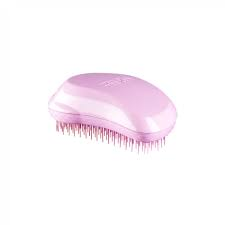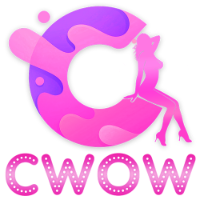Beautiful and challenging to manage, wavy hair is a double-edged sword. Because of its unusual texture, you need to take extra precautions when handling it, such as brushing correctly to prevent knots and breakage. Wavy hair can be damaged by improper brushing techniques, leading to frizz, split ends, and a dulling of the hair’s natural waves. Brushing, on the other hand, with the correct tools and methods, may help boost the volume and structure of wavy hair while also encouraging healthy development and a glossy finish.
The finest ways to brush wavy hair, from using the correct tools and products to avoiding breakage and style tricks, will be discussed in this article. We’ll also talk about the many forms of wavy hair and how to adjust your brushing regimen accordingly. This article will provide you with the information and skills necessary to correctly brush and care for your magnificent waves, whether you’re new to wavy hair care or wanting to perfect your current practice.
If you want your waves to last as long as possible, you need to know the right way to brush them, so stick around!
What type of wavy hair do you have?
The texture, shape, and thickness of wavy hair can vary greatly from one type to the next. The hair typing method created by Andre Walker, Oprah Winfrey’s former hair stylist, is the most widely used system for categorizing wavy hair. This classification scheme classifies curly hair into one of four broad types, with smaller subdivisions established according to hair’s structure and thickness.

The right way to brush wavy hairs is based on your types
According to this classification scheme, there are several varieties of waves, including the following:
Type 2A hair:
Type 2A hair is the most subtle form of wave, characterized by soft, loose waves that curve in a “S” pattern. It is usually fine and simple to manage, yet it can be unruly and lack volume.
- Start at the ends and work your way up to the roots as you gently untangle your hair with a wide-tooth comb or detangling brush.
- Use a boar bristle brush and work it through your hair from the roots to the ends to disperse natural oils and boost shine.
Type 2B hair:
Type 2B hair has a more pronounced “S” form and tighter, more dramatic waves than type 1 hair. Hair of this type is often of a medium texture and thickness, however it can have a tendency toward frizz and flyaway s.
- To gently remove knots and tangles, use a detangling brush or paddle brush with flexible bristles.
- Too much vigorous brushing can generate frizz and flatten the hair, ruining the waves’ natural look.
- The best way to give your hair more volume is to brush it upside down, from the roots to the ends.
Type 2C hair:
Type 2C hair is even more tightly curled and defined, and its waves commonly combine the “S” and “C” shapes. It has a density that is anywhere between medium and thick, with a texture that is typically coarse.
- Start at the ends and work your way up to the roots with a detangling brush or wide-tooth comb to gently remove knots.
- If you want to make brushing easier and minimize breakage, you should use a leave-in conditioner or detangling spray.
- The waves can be defined and the shine amplified with the help of a boar bristle brush or a wide-tooth comb.
Type 3A hair:
Type 3A hair is the most tame variety of curly hair, characterized by little, well-defined curls approximately the size of a piece of sidewalk chalk. It tends to be frizzy and flat because of its medium texture.
- Comb or brush hair gently from the ends to the roots using a wide-tooth comb for detangling tools.
- It’s best not to use a brush on your curls, as doing so might cause them to lose their shape and become unmanageable.
- Scrunch wet hair with your hands and dry it with a diffuser to give texture and definition.
Type 3B hair: This hair type has curls that are tighter and more coiled, with a diameter similar to that of a marker. It has a density and texture somewhere in the middle, and it can be dry and prone to frizz.
- Comb or brush hair gently from the ends to the roots using a wide-tooth comb for detangling tools.
- Use a curl-defining product to bring out the curl’s natural beauty and tame the frizz.
- Scrunch your hair with your hands to add volume and use your fingers to separate and define curls.
Type 3C hair:
Type 3C hair is characterized by tightly coiled, tightly packed curls that can be a challenge to manage. It has a rough feel and is easily dried out, broken, and tangled.
- Detangle your hair by working gently from the ends up with a wide-tooth comb for detangling brush.
- Brushing will be less of a hassle and breakage can be avoided if you use a detangling spray or leave-in conditioner before you go to brush.
- Define and separate curls using your fingers or a small, wide-tooth comb; compress hair with your hands to add volume and structure.
Wavy hair, in general, may take on a wide variety of looks and textures, so it’s crucial to learn what works best for your hair.
Hair Brush Products
Having the appropriate equipment and products can make all the difference when it comes to keeping your wavy hair healthy and beautiful. It’s difficult to know where to begin when faced with so many possibilities. That’s why we rounded up a selection of our favorite brushes and styling tools for curly hair. Learn more about these must-haves for achieving and maintaining wavy hair by reading on.
- A Denman Brush – is an excellent tool for detangling curly hair without producing breakage or frizz. The nylon bristles are soft on the hair and work gently through tangles as they smooth and shape waves.

- Wet Brush Original Detangler – Whether used on either damp or dry hair, the Wet Brush Original Detangler can detangle wavy hair with ease. Detangling is done softly and damage-free thanks to the bristles’ pliability.

- The Tangle Teezer – A special brush made to remove knots from hair without yanking or breaking it. Its innovative construction prevents hair from breaking and frizzing while encouraging growth.

- Wide-toothed comb – A must-have for curly or wavy hair. It aids in gently detangling hair without damaging it or flattening out the natural wave structure.

Keep in mind that the finest products and tools for wavy hair may differ from one person to the next. Don’t be afraid to try out several strategies until you find one that suits you best.
Moisture and Nourishment
- Leave-in conditioners – Great for wavy hair since they add moisture and protect the hair from heat styling tools and environmental stress. It has the added benefit of taming flyaways and boosting shine.
- Curl Defining Cream – Enhance your natural waves and curls with a curl-defining cream that also tames frizz and supplies grip. This volumizing and defining product may be applied to either damp or dried hair by scrunching it in. It works by smoothing the hair cuticle and controlling frizz, which can make curls look more defined and bouncy. Curl defining cream also adds moisture to the hair, which helps to maintain the shape of curls and prevent them from becoming frizzy or limp.
Proper Brushing
There should be a certain restraint and patience when it comes to brushing wavy hair. It’s important to follow these steps:
- Brush Hair While Wet: Curly hair, which is more fragile than straight hair, should be brushed only when it is wet. Instead, apply a leave-in conditioner and comb through your hair with a wide-tooth comb or detangling brush while your hair is still wet.
- Start at the ends: It’s best to begin brushing your hair at the ends and work your way up to the roots. This will support in detangling your hair and preventing breakage.
- Use a gentle touch: Curly hair can be brushed without damaging the curl pattern if you use a light touch. Don’t break your hair by yanking or tugging at it.
- Avoid brushing too often: Curly hair can easily be damaged if brushed too frequently, so it’s best to refrain from doing so. Use your fingers to gently detangle curls instead of a brush, and brush only when absolutely necessary.
- Use a curl defining brush: The use of a curl defining brush can help you detangle your hair while emphasizing the natural shape of your curls. If your hair is curly, use the brush to gently detangle it and distribute your styling products throughout.
- Finish with a diffuser: Once you’ve finished brushing your hair, switch to the diffuser attachment of your blow dryer and finish drying it gently. Your curls will hold their form and experience less frizz if you do this.
Don’t forget that taking care of your hair regularly is the first step toward beautiful, healthy curls. Use high-quality hair care products and keep your hair safe from heat and the elements, in addition to regular brushing.
How often to brush
How often you should brush your hair depends on your hair type and styling routine. Generally, it’s recommended to brush your hair once or twice a day, but this can vary depending on your hair type and length. People with fine hair may want to brush more often to prevent tangles, while people with curly hair should brush less often to avoid damaging the curls. It’s important to be gentle when brushing your hair and to use a brush that is appropriate for your hair type.
How to clean your brush:
Cleaning your hairbrush regularly is important for maintaining healthy hair and preventing the spread of bacteria. Here are some steps to clean your hairbrush:
- Remove any hair from the brush. Use a comb or scissors to remove any hair that is tangled in the brush.
- Fill a bowl with warm water and add a few drops of shampoo or liquid soap. Swirl the brush in the water to remove any product buildup or dirt.
- Rinse the brush under running water to remove any remaining shampoo or soap.
- Dry the brush with a towel and remove any excess water.
- Let the brush air dry completely before using it again.
It’s a good idea to clean your hairbrush at least once a week, but you may want to clean it more often if you use a lot of styling products or have a scalp condition such as dandruff.
Now that you’ve learned how to properly brushyour gorgeous natural wavy hair, you are now saved from horrible hair days and possibly irreversible damage in old age. The tools, products, and manner you use to brush curly is crucial in order to get the results you want. It is always important though to take notice of what your hair needs for that day and adjust accordingly. Remember to rest your hair and let it breathe on your off days. Hold off of using any product and heat a couple of times in a week if possible.
Share with us your personal hack in brushing your wavy hair. It will help some people!
Sources:
https://www.curlcentric.com/hair-typing-system/
https://wwd.com/shop/shop-beauty/best-curly-hair-brushes-1235093848/
https://goldielocks.com/blogs/news/leave-in-conditioner
https://www.carolsdaughter.com/blog/hair/hair-care-tips/how-to-brush-curly-hair.html
https://www.healthline.com/health/how-to-take-care-of-curly-hair

